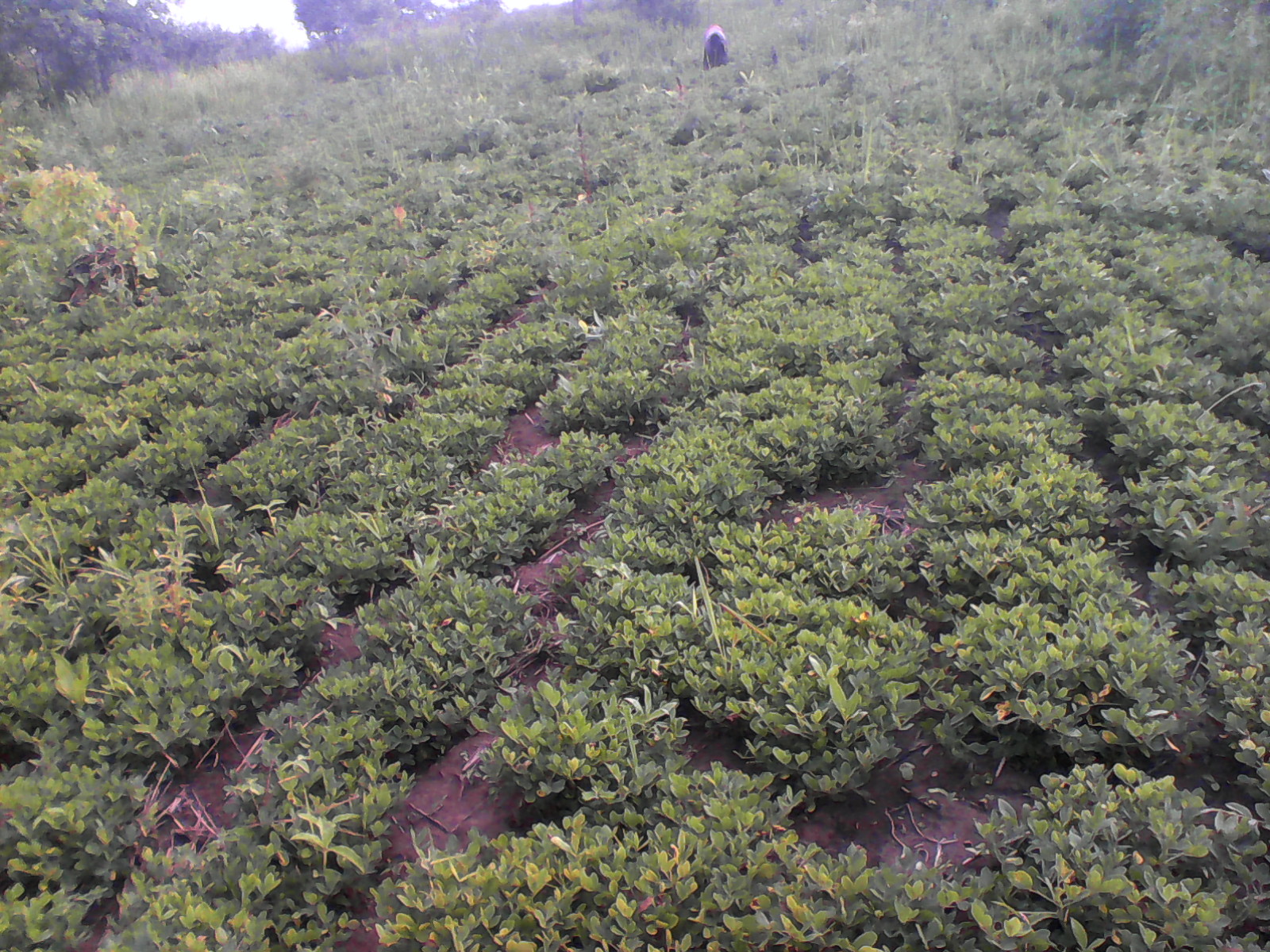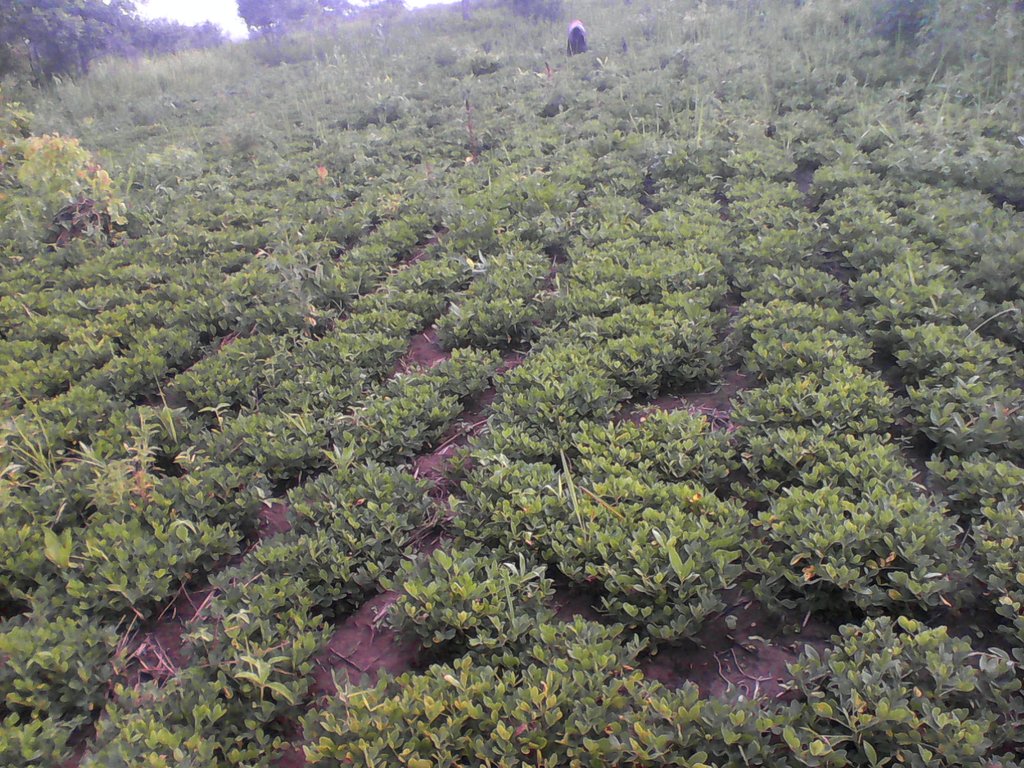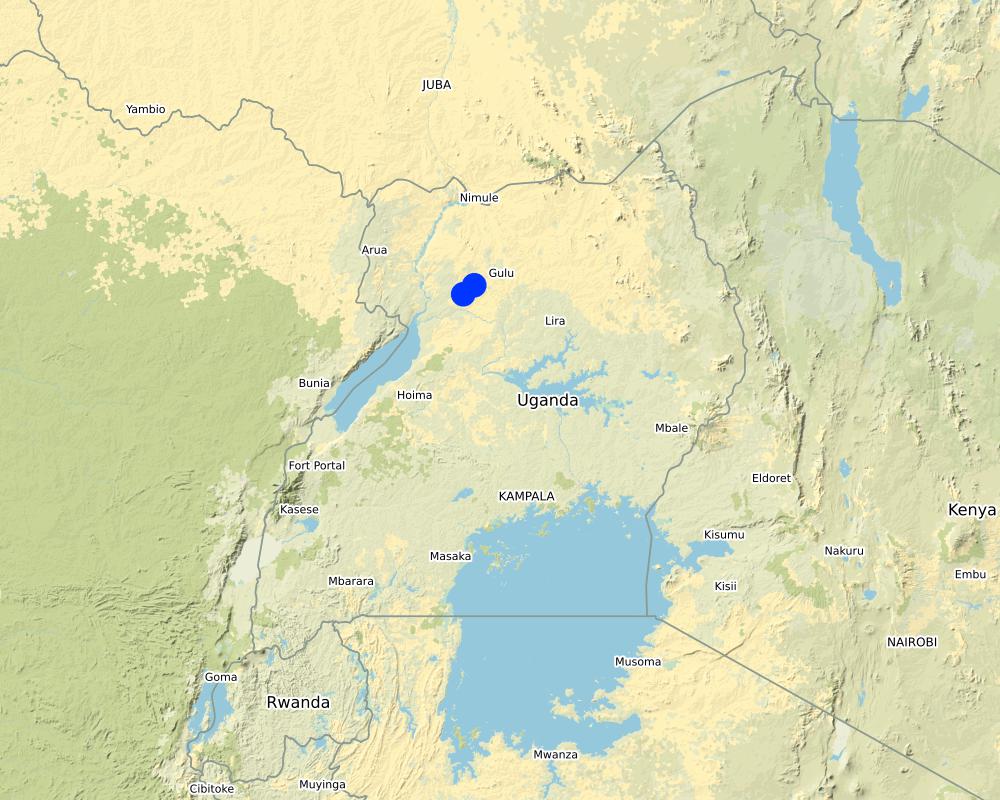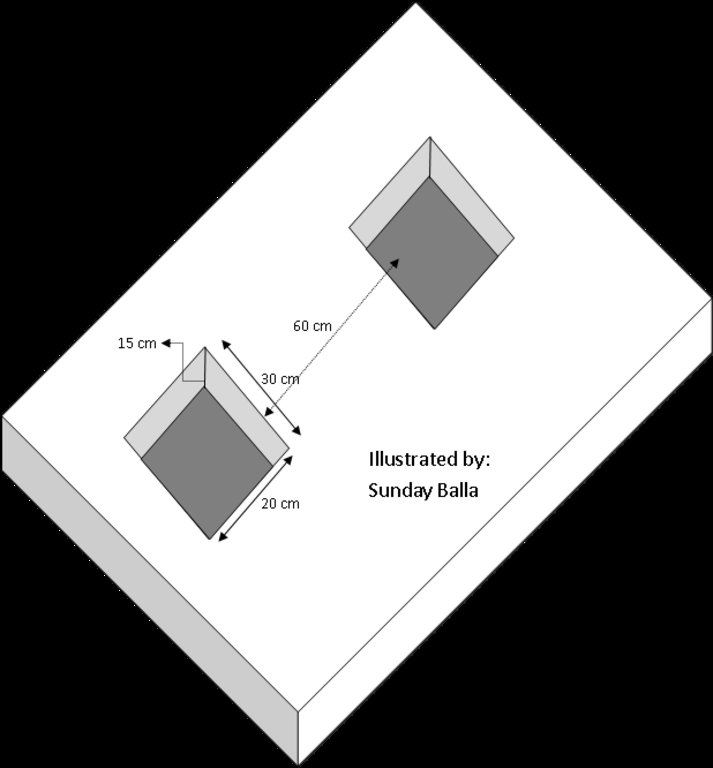Conservation Farming Basins In Annual Crops For Water Conservation [乌干达]
- 创建:
- 更新:
- 编制者: Joana Eichenberger
- 编辑者: JOY TUKAHIRWA, Sunday Balla Amale, Kamugisha Rick Nelson
- 审查者: John Stephen Tenywa, Nicole Harari, Luigi Piemontese, Udo Höggel
Tongo basin
technologies_3307 - 乌干达
查看章节
全部展开 全部收起1. 一般信息
1.2 参与该技术评估和文件编制的资源人员和机构的联系方式
有助于对技术进行记录/评估的项目名称(如相关)
Scaling-up SLM practices by smallholder farmers (IFAD)有助于对技术进行记录/评估的机构名称(如相关)
Makerere University (Makerere University) - 乌干达1.3 关于使用通过WOCAT记录的数据的条件
(现场)数据是什么时候汇编的?:
17/07/2017
编制者和关键资源人员接受有关使用通过WOCAT记录数据的条件。:
是
1.4 所述技术的可持续性声明
这里所描述的技术在土地退化方面是否存在问题,导致无法被认为是一种可持续的土地管理技术?:
否
1.5 请参阅有关SLM方法的问卷
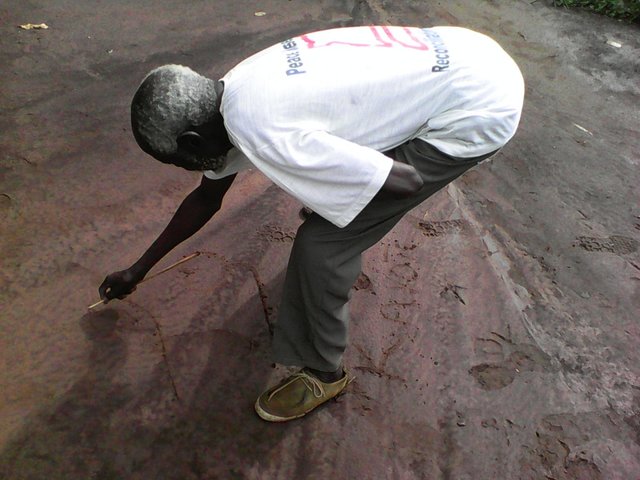
Peer farmers as a village resource person for … [乌干达]
A prosocial behavior approach, where a peer farmer identified by other local farmers is trained on a technology and then used as a trainer for the fellow farmers (farmer group or neighbors).
- 编制者: Sunday Balla Amale
2. SLM技术的说明
2.1 技术简介
技术定义:
CF basins are constructed in the field to act as water storage containers. Water is conserved within the basins and plants can survive with this conserved water during periods of little rainfall and dry spells.
2.2 技术的详细说明
说明:
Farmers in Northern Uganda are observing changes in weather patterns. Rainfall has become unpredictable and unreliable for sustainable farming This forces farmers to adapt to these changes using available conservation farming technologies such as Conservation Farming (CF) basins.
CF basins are water conservation structures constructed in the garden during dry seasons. The basins store rainwater during rainy seasons and ensure water availability for plants during periods of little or no rainfall.
During construction of the basins, plant residues in the field are slashed and retained within the garden. A common hoe is used to excavate rectangular holes of about 30cm x 20cm, having a depth of 15cm. The top soil is put on one side of the basin while the subsoil is put on the other side. When the basin is ready, the top soil is put back into the hole to cover about half of the total basin depth. The basin is now ready for planting at the onset of rains. The spacing between basins depends on the type of crop to be planted. For groundnuts (Arachis hypogaea) it's 30cm x 30cm. The number of seeds per hole (seed rate) also depends on the crop. For maize, 3 plants per hole are to be planted, for groundnut, 6-8 plants per hole and for beans 6-8 plants per hole.
The basins are particularly important during critical growth periods such as germination, flowering and fruit seting if a sudden drought occurs. The basins conserve water, reduce surface runoff and support extended crop growth during dry seasons. After harvesting crop residues are put back into the basin to decompose so to build up humus in to basin.
Farmers who practice this technology have reported healthy crop growth and reduced risk of crop failure. However, construction of CF basins is labour intensive because good basins need to be constructed in the dry season when the soil is hard. However, this challenge is outweighed by the fact that basins only need to be constructed once every 3-4 years.
2.3 技术照片
2.5 已应用该技术的、本评估所涵盖的国家/地区/地点
国家:
乌干达
区域/州/省:
Northern
有关地点的进一步说明:
Nwoya District
注释:
Location where the CF basin technology was implemented
Map
×2.6 实施日期
注明实施年份:
2016
2.7 技术介绍
详细说明该技术是如何引入的:
- 在实验/研究期间
注释(项目类型等):
Funded through CIAT (International Center for Tropical Agriculture)
3. SLM技术的分类
3.1 该技术的主要目的
- 改良生产
- 减少、预防、恢复土地退化
- 适应气候变化/极端天气及其影响
- 创造有益的经济影响
3.2 应用该技术的当前土地利用类型

农田
- 一年一作
主要农作物(经济作物及粮食作物):
Groundnut, Beans, Maize
3.3 有关土地利用的更多信息
该技术所应用土地的供水:
- 雨养
每年的生长季节数:
- 2
3.4 该技术所属的SLM组
- 集水
- 地表水管理(泉、河、湖、海)
3.5 技术传播
具体说明该技术的分布:
- 适用于特定场所/集中在较小区域
3.6 包含该技术的可持续土地管理措施

农艺措施
- A2:有机质/土壤肥力

结构措施
- S4:平沟、坑

管理措施
- M2:改变管理/强度级别
3.7 该技术强调的主要土地退化类型

土壤水蚀
- Wt:表土流失/地表侵蚀

土壤风蚀
- Et:表土流失

生物性退化
- Bl:土壤寿命损失

水质恶化
- Hs:地表水良变化
3.8 防止、减少或恢复土地退化
具体数量名该技术与土地退化有关的目标:
- 减少土地退化
- 适应土地退化
4. 技术规范、实施活动、投入和成本
4.1 该技术的技术图纸
4.2 技术规范/技术图纸说明
CF basins
1. Rectangular: 30cm x 20cm
2. Depth: 15cm
3. Spacing between basins: 30cm depending on crop
4. Seed rate: 3-8 plants per hole depending on the crop
4.3 有关投入和成本计算的一般信息
具体说明成本和投入是如何计算的:
- 每个技术区域
注明尺寸和面积单位:
Acre
其它/国家货币(具体说明):
Uganda Shillings
注明美元与当地货币的汇率(如相关):1美元=:
3600.0
注明雇用劳工的每日平均工资成本:
5000
4.4 技术建立活动
| 活动 | 措施类型 | 时间 | |
|---|---|---|---|
| 1. | Slashing the field (clearence) | 农业学的 | dry season |
| 2. | Constructing basins | 结构性的 | dry season |
| 3. | Planting crops | 农业学的 | onset of rains |
4.5 技术建立所需要的费用和投入
| 对投入进行具体说明 | 单位 | 数量 | 单位成本 | 每项投入的总成本 | 土地使用者承担的成本% | |
|---|---|---|---|---|---|---|
| 劳动力 | Slashing | person days | 15.0 | 5000.0 | 75000.0 | 100.0 |
| 劳动力 | Construction of basins | person days | 30.0 | 3000.0 | 90000.0 | 100.0 |
| 劳动力 | Planting | person days | 15.0 | 5000.0 | 75000.0 | 100.0 |
| 设备 | CF hoe | no | 5.0 | 12000.0 | 60000.0 | 100.0 |
| 设备 | Slashers | no | 5.0 | 6000.0 | 30000.0 | 100.0 |
| 植物材料 | Seeds | kg | 30.0 | 5000.0 | 150000.0 | 100.0 |
| 技术建立所需总成本 | 480000.0 | |||||
4.6 维护/经常性活动
| 活动 | 措施类型 | 时间/频率 | |
|---|---|---|---|
| 1. | Clearing soil from basins | 结构性的 | 3 years of establishment |
4.7 维护/经常性活动所需要的费用和投入(每年)
| 对投入进行具体说明 | 单位 | 数量 | 单位成本 | 每项投入的总成本 | 土地使用者承担的成本% | |
|---|---|---|---|---|---|---|
| 劳动力 | Labour | person days | 15.0 | 3000.0 | 45000.0 | 100.0 |
| 技术维护所需总成本 | 45000.0 | |||||
4.8 影响成本的最重要因素
描述影响成本的最决定性因素:
Labour for digging during establishment and clearing soil from basins during maintenance
5. 自然和人文环境
5.1 气候
年降雨量
- < 250毫米
- 251-500毫米
- 501-750毫米
- 751-1,000毫米
- 1,001-1,500毫米
- 1,501-2,000毫米
- 2,001-3,000毫米
- 3,001-4,000毫米
- > 4,000毫米
农业气候带
- 半湿润
5.2 地形
平均坡度:
- 水平(0-2%)
- 缓降(3-5%)
- 平缓(6-10%)
- 滚坡(11-15%)
- 崎岖(16-30%)
- 陡峭(31-60%)
- 非常陡峭(>60%)
地形:
- 高原/平原
- 山脊
- 山坡
- 山地斜坡
- 麓坡
- 谷底
垂直分布带:
- 0-100 m a.s.l.
- 101-500 m a.s.l.
- 501-1,000 m a.s.l.
- 1,001-1,500 m a.s.l.
- 1,501-2,000 m a.s.l.
- 2,001-2,500 m a.s.l.
- 2,501-3,000 m a.s.l.
- 3,001-4,000 m a.s.l.
- > 4,000 m a.s.l.
说明该技术是否专门应用于:
- 凹陷情况
5.3 土壤
平均土层深度:
- 非常浅(0-20厘米)
- 浅(21-50厘米)
- 中等深度(51-80厘米)
- 深(81-120厘米)
- 非常深(> 120厘米)
土壤质地(表土):
- 中粒(壤土、粉土)
土壤质地(地表以下> 20厘米):
- 细粒/重质(粘土)
表土有机质:
- 中(1-3%)
5.4 水资源可用性和质量
地下水位表:
5-50米
地表水的可用性:
中等
水质(未处理):
良好饮用水
水的盐度有问题吗?:
否
该区域正在发生洪水吗?:
否
5.5 生物多样性
物种多样性:
- 中等
栖息地多样性:
- 中等
5.6 应用该技术的土地使用者的特征
定栖或游牧:
- 定栖的
生产系统的市场定位:
- 混合(生计/商业
非农收入:
- 低于全部收入的10%
相对财富水平:
- 贫瘠
个人或集体:
- 个人/家庭
机械化水平:
- 手工作业
- 畜力牵引
性别:
- 女人
- 男人
土地使用者的年龄:
- 青年人
- 中年人
5.7 应用该技术的土地使用者拥有或租用的平均土地面积
- < 0.5 公顷
- 0.5-1 公顷
- 1-2 公顷
- 2-5公顷
- 5-15公顷
- 15-50公顷
- 50-100公顷
- 100-500公顷
- 500-1,000公顷
- 1,000-10,000公顷
- > 10,000公顷
这被认为是小规模、中规模还是大规模的(参照当地实际情况)?:
- 小规模的
5.8 土地所有权、土地使用权和水使用权
土地所有权:
- 个人,未命名
- 个人,有命名
土地使用权:
- 社区(有组织)
- 个人
用水权:
- 社区(有组织)
5.9 进入服务和基础设施的通道
健康:
- 贫瘠
- 适度的
- 好
教育:
- 贫瘠
- 适度的
- 好
技术援助:
- 贫瘠
- 适度的
- 好
就业(例如非农):
- 贫瘠
- 适度的
- 好
市场:
- 贫瘠
- 适度的
- 好
能源:
- 贫瘠
- 适度的
- 好
道路和交通:
- 贫瘠
- 适度的
- 好
饮用水和卫生设施:
- 贫瘠
- 适度的
- 好
金融服务:
- 贫瘠
- 适度的
- 好
6. 影响和结论性说明
6.1 该技术的现场影响
社会经济效应
生产
作物生产
作物质量
生产故障风险
土地管理
水资源可用性和质量
灌溉用水需求
注释/具体说明:
Water conserved in basins
6.2 该技术的场外影响已经显现
水资源可用性
6.3 技术对渐变气候以及与气候相关的极端情况/灾害的暴露和敏感性(土地使用者认为的极端情况/灾害)
渐变气候
渐变气候
| 季节 | 气候变化/极端天气的类型 | 该技术是如何应对的? | |
|---|---|---|---|
| 年温度 | 增加 | 好 | |
| 季节性温度 | 湿季/雨季 | 增加 | 适度 |
| 年降雨量 | 减少 | 非常好 | |
| 季雨量 | 湿季/雨季 | 减少 | 非常好 |
气候有关的极端情况(灾害)
气候灾害
| 该技术是如何应对的? | |
|---|---|
| 干旱 | 非常好 |
6.4 成本效益分析
技术收益与技术建立成本相比如何(从土地使用者的角度看)?
短期回报:
轻度消极
长期回报:
非常积极
技术收益与技术维护成本/经常性成本相比如何(从土地使用者的角度看)?
短期回报:
积极
长期回报:
非常积极
6.5 技术采用
- 1-10%
在所有采用这项技术的人当中,有多少人是自发地采用该技术,即未获得任何物质奖励/付款?:
- 90-100%
6.6 适应
最近是否对该技术进行了修改以适应不断变化的条件?:
否
6.7 该技术的优点/长处/机会
| 土地使用者眼中的长处/优势/机会 |
|---|
| Constructed once every 3-4 years |
| Does not require technical skills or sophisticated equipment to construct the basins |
| Reduced chances of crop failures due to droughts |
| 编制者或其他关键资源人员认为的长处/优势/机会 |
|---|
| Water storage efficiency is high |
| Plant roots can easily access water from the soil |
| Crop residues have additional functions to retain soil moisture |
6.8 技术的弱点/缺点/风险及其克服方法
| 土地使用者认为的弱点/缺点/风险 | 如何克服它们? |
|---|---|
| Difficult to construct the basins | Use a CF hoe |
7. 参考和链接
7.1 信息的方法/来源
- 与土地使用者的访谈
3
- 与SLM专业人员/专家的访谈
2
- 根据报告和其他现有文档进行编译
1
链接和模块
全部展开 全部收起链接

Peer farmers as a village resource person for … [乌干达]
A prosocial behavior approach, where a peer farmer identified by other local farmers is trained on a technology and then used as a trainer for the fellow farmers (farmer group or neighbors).
- 编制者: Sunday Balla Amale
模块
无模块


